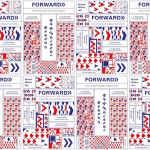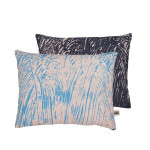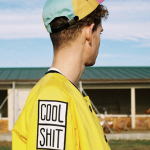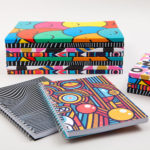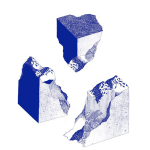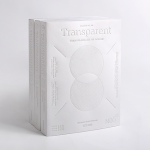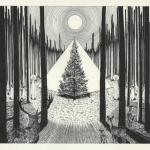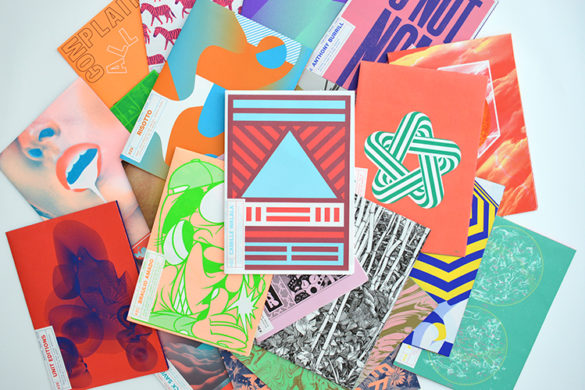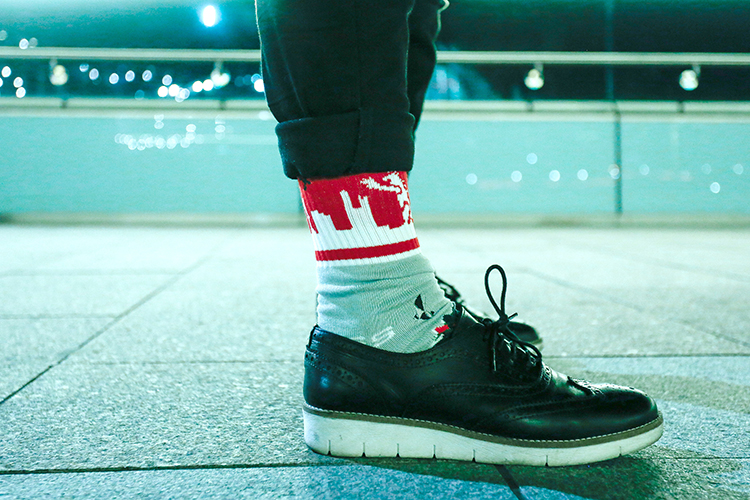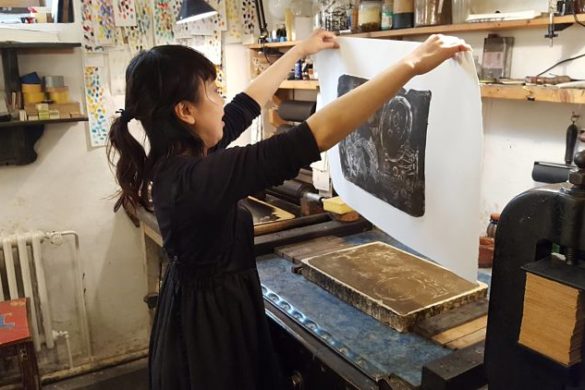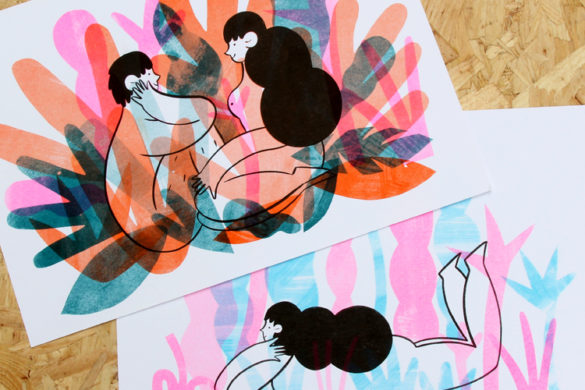Wednesday night on the Embankment, on the top floor of the iconic Shell building, and thirty young student designers and illustrators are awaiting the results of the 10th Penguin Random House Design Award competition. Earlier this year, students around the UK and the world were asked to design book jackets for a ‘A Clockwork Orange’, ‘How to be a Woman’ and ‘Emil and the Detectives’.
A friendly crowd of publishers, designers, tutors and myself are looking around at the ten shortlisted entries presented on each table. The standard is incredibly high and the winners are hard to call. Members of the in-house design team are keeping quiet about their favourites in preparation for the announcement.
With just enough time for a couple of glasses of champagne to steady the nerves, the crowd gathers to hear each category’s winner along with some high praise and occasionally pretty entertaining feedback from the judges, particularly from Caitlin Moran as you would expect.
Here are the winners:
The winner of the Children’s Prize is:
Ailsa Johnson from the University of Edinburgh for her stand out design for ‘Emil and the Detectives’.
“Who is the man with the mysterious hat?”
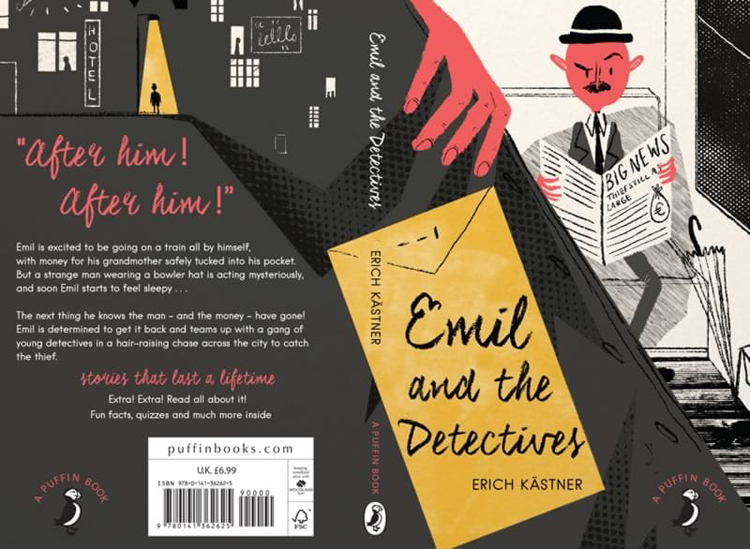
The winner of the Adult Fiction Prize is:
Zack Crook from the University of Central Lancashire for his typographical solution to ‘A Clockwork Orange’
“We loved how this brought Burgess’ remarkable language on to the front of the cover. It’s a clever, intellectual solution.”
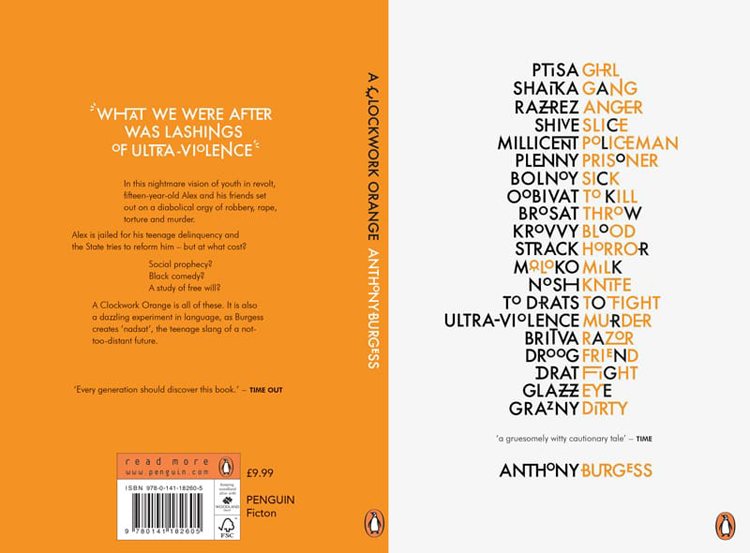
The winner of the Adult Non-Fiction Prize is:
Zachary Wieland from the University of Texas for his inspired design for ‘How to be a Woman’
“ A deserving winner for it’s confidence, simplicity, and effectual reminder of how incredibly pleasing a pink highlighter pen is. Everyone loves a pink highlighter pen, AM I RIGHT?”
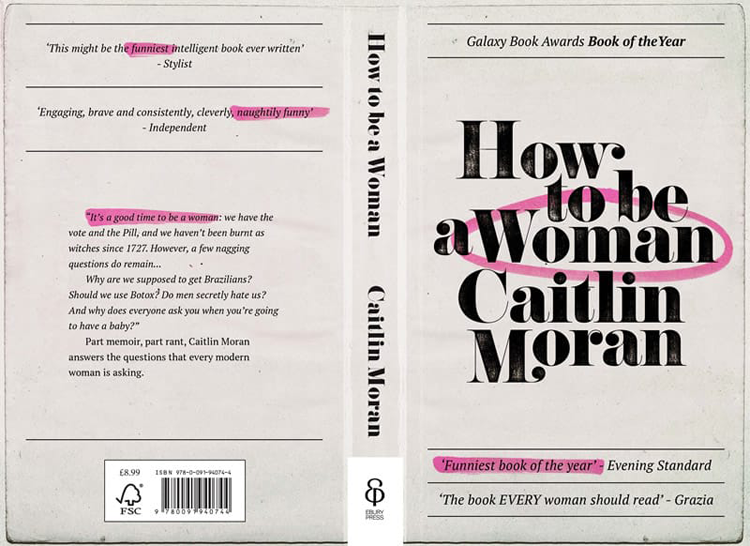
The winning entries featured bold design to catch your eye and reward you with their subtle intelligence as you go in for a closer look. The Design Award looks set to continue for many years to come and I was given the opportunity to chat to Joanna Prior, MD of Penguin General, about the past and future of the competition and the Creativity Gap.
Interview with Joanna Prior
Emma: When you set up the Penguin Design Award 10 years ago, what did you set out to achieve?
Joanna: When we’d done all of our fun and games for our 70th anniversary, one of the things we thought about at the end of it was what the legacy was going to be. Design is such an important part of the Penguin story, and we wanted to find a way of really ensuring that we remain well known for our design, that we were encouraging great design around the UK and that we were particularly nurturing the next generation of young graphic design talent.
E: And has that goal changed very much over the years?
J: The fundamentals of why we set it up are still as true today as they were then. To try and encourage people who love design to think about a job in publishing because you know there are many other kinds of design you could go off and do. But we want the talent to come here! I think what’s changed is that the prize has expanded. Since our merger with Random House, we felt we could expand the whole thing. So we made the prizes bigger, we now have three briefs going out each year rather than just the one and I think the profile of the prize has just grown amongst the student population, which is really good.
E: I remember it from when I was a student, I wish I’d entered more times!
J: Yes I know. Well it’s lovely and I mean it’s wonderful, and it is quite a time consuming thing. But we work quite closely with the colleges to try and ensure that it’s something useful and can be part of the course.
E: I think the restrictions of the book jacket brief are a good thing, you have all these other projects where you can go wild and do whatever you want…
J: Whereas this is quite precise isn’t it, because that’s the reality of the job. You know, if you were to come and work here you would be given a really really tight brief and quite a short amount of time to do it.
E: Can you tell me any great Design Award success stories?
J: Well, we have hired some past winners and runners up as part of the design team and we’ve also gone back and used some of the other shortlisted designers for illustration jobs. What we hope is that just being shortlisted for this prize will help them in their search for their first job. Even if it’s not with us we hope it’ll just make them stand out a bit.
E: That’s great. So I’m interested to know about your ideas for the future of the competition.
J: Ooh, well we talked about that actually, we had a meeting with all the art directors and asked what more do we need to be doing? And the main thing we’re thinking about is about making sure we are as inclusive as possible. Although we want to support art schools and those who’ve made the decision to go to college and study art, we don’t want to restrict it to that. People might be doing other sorts of work, other sorts of studying, especially because it costs so much money to go to university now, and we don’t want to exclude people on financial grounds. It’s going to remain a student prize, we want for it still to be a young person’s prize but we’re trying to open it up.
In publishing we’re trying to be more open, appear more open – I think that we always were but don’t think people knew it – to talent wherever it comes from. I hope over time that will mean that we unearth more and more talented individuals and make more people think about publishing as a career.
E: Yes, I guess that the paid work experience given to the winners is going to be great for them.
J: That’s a really important part of the prize. That sense that you can be here and get a sense not just of the work but also the culture and feel that it’s the sort of place that you could happily come and work and have an enjoyable time, even if you have never thought about it before and no-one in your universe had anything to do with publishing.
It’s a great world but I worry that it feels a bit exclusive, and a little bit privileged.
E: Do you think that it is because a lot of people who are in publishing are most passionate about the physical book and therefore the kind of old fashioned lovely bookshop and that sort of thing?
J: It’s interesting though, that is changing quite a lot now. In a way the design of the physical book is still really important because a lot of people still go into bookshops, hold and look at the book and then go and buy it on Amazon. But we need to make sure that the design of a book jacket works in this tiny thumbnail on a website as well. The way we design books also has to take into account that about 30% of our books are ready digitally, so we just have to be smart about how we present them.
E: The last question I wanted to ask was related this, to the new ways in which people access books. Do you have anything in mind for future competitions in the realm of e-books and apps? Anything in the pipeline for this competition or another?
J: In terms of this competition I would say it’ll remain very focussed on the book itself. But, especially in the children’s area, app development is something that is exciting. You can imagine things like lift-the-flap books working beautifully. At the moment it’s sort of happening in a separate place to the books. I feel sure that we will want to nurture the next generation of amazing developers, animators, coders. So we’ll just need to set up a whole other prize for that.








penguinrandomhousedesignaward.co.uk
You might like...
- Penguin Random House Design Award 2016 - June 24, 2016

